Jane Marlow's Blog, page 4
March 24, 2018
CAN'T FOLLOW ANNA KARENINA? YOU'RE NOT ALONE
"He soon felt that the fulfillment of his desires gave him only one grain of the mountain of happiness he had expected. This fulfillment showed him the eternal error men make in imagining that their happiness depends on the realization of their desires.”
- Anna Karenina, Leo Tolstoy
Anna Karenina contains over 800 pages and was originally published in serialized form. The story revolves around more than 30 important characters (not including non-essential characters). Many people find it a tad difficult to follow.
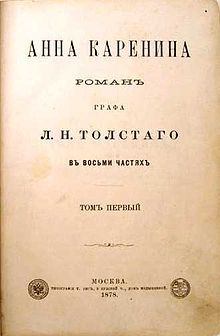
Cover page of the first volume
of Anna Karenina
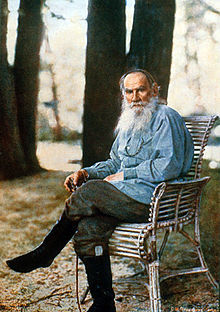
Leo Tolsoy
1828 - 1910
- Anna Karenina, Leo Tolstoy
Anna Karenina contains over 800 pages and was originally published in serialized form. The story revolves around more than 30 important characters (not including non-essential characters). Many people find it a tad difficult to follow.

Cover page of the first volume
of Anna Karenina

Leo Tolsoy
1828 - 1910
Published on March 24, 2018 11:04
March 13, 2018
AUTHOR Q & A
Elena, my publicist, recently requested that I answer a Q&A about my life. When I asked her why, she replied, “People are interested.”
My face scrunched into a giant question mark. Why would people be interested in plain Jane? But Elena’s a pro at her business, so how I could I refuse? Here a couple of her questions.
Why do you think are you drawn to books?
My attraction to books can be traced back to my days of pigtails and anklet socks. Although I was raised in the quintessential modest house, my parents splurged on one item: a wall of built-in bookshelves. Among my earliest of chores was a twice-a-year dusting of the shelves and their contents. While flicking the feather duster, I daydreamed of the day I’d be old enough to actually read the novels and Readers Digest Condensed Books.
What did you read while growing up?
When I reached junior high, I put the Nancy Drew series behind me. Being a typical girlie-girl, I became enamored by the first adult, mainstream novel I read, Gone with the Wind.

During my teens, things changed (as they tend to do). I gravitated toward science as well as James Harriot’s All Creatures Great and Small stories. That combination lead to a fulfilling 30-year career as veterinarian.
Do you have a favorite author?
If only I could be as talented a writer as Pulitzer Prize-winner Richard Russo! During a seminar on writing fiction, the instructor told us that taking pen in hand and writing and re-writing good passages from favorite books would promote brain neuron connections that would improve our own writing. I must have copied the same passage from Nobody’s Fool several hundred times. If you were sitting here with me right now, I could recite all 672 words for you!
What insights do you want your readers to glean from How Did I Get Here?
I hope readers find several take-home messages. First, the old adage, “Beauty is only skin deep.”
Second, malevolence and injustice can mold a child, but fortitude plus a helping hand can remake the man.
Third, every person is obligated to give back to society. And not just according to what he received from it, but at a higher level.
Fourth, an enhanced understanding of the demons of war as manifested in Post-Traumatic Stress Disorder.

My face scrunched into a giant question mark. Why would people be interested in plain Jane? But Elena’s a pro at her business, so how I could I refuse? Here a couple of her questions.
Why do you think are you drawn to books?
My attraction to books can be traced back to my days of pigtails and anklet socks. Although I was raised in the quintessential modest house, my parents splurged on one item: a wall of built-in bookshelves. Among my earliest of chores was a twice-a-year dusting of the shelves and their contents. While flicking the feather duster, I daydreamed of the day I’d be old enough to actually read the novels and Readers Digest Condensed Books.
What did you read while growing up?
When I reached junior high, I put the Nancy Drew series behind me. Being a typical girlie-girl, I became enamored by the first adult, mainstream novel I read, Gone with the Wind.

During my teens, things changed (as they tend to do). I gravitated toward science as well as James Harriot’s All Creatures Great and Small stories. That combination lead to a fulfilling 30-year career as veterinarian.
Do you have a favorite author?
If only I could be as talented a writer as Pulitzer Prize-winner Richard Russo! During a seminar on writing fiction, the instructor told us that taking pen in hand and writing and re-writing good passages from favorite books would promote brain neuron connections that would improve our own writing. I must have copied the same passage from Nobody’s Fool several hundred times. If you were sitting here with me right now, I could recite all 672 words for you!
What insights do you want your readers to glean from How Did I Get Here?
I hope readers find several take-home messages. First, the old adage, “Beauty is only skin deep.”
Second, malevolence and injustice can mold a child, but fortitude plus a helping hand can remake the man.
Third, every person is obligated to give back to society. And not just according to what he received from it, but at a higher level.
Fourth, an enhanced understanding of the demons of war as manifested in Post-Traumatic Stress Disorder.

Published on March 13, 2018 10:35
February 11, 2018
TITLES THAT DIDN'T PASS MUSTER
Description of A Good Book Title:

For Who Is to Blame? A Russian Riddle, I came up with 60 possible titles. Below are some of the better ones that didn't make the cut.
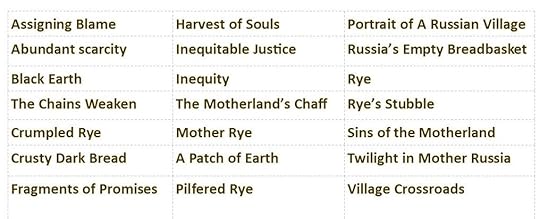

For Who Is to Blame? A Russian Riddle, I came up with 60 possible titles. Below are some of the better ones that didn't make the cut.

Published on February 11, 2018 08:59
February 10, 2018
CURB APPEAL
What makes a good book cover?
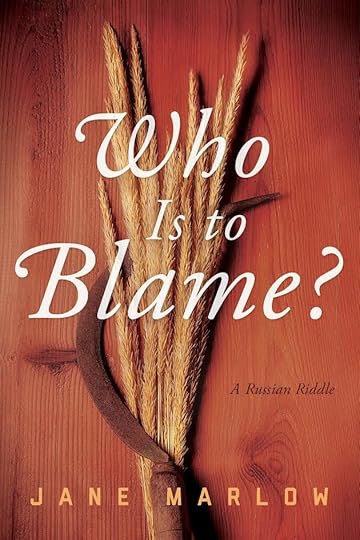
First and foremost, the cover is a sales tool. In a flash, it must convey enough information to grab potential readers. An appealing cover communicates the book’s genre as well as the age and gender of its readership. Is it a laugh-out-loud coming-of-age story? Or a dark cyberpunk fantasy?
The artwork must be harmonious with the type's font and size, and needs to be unique but not out in left field. A well-designed cover conveys a broad concept rather than fine details. It must be legible even when viewed as an Amazon thumbnail.
My publisher supplied me with four cover options. Ultimately, the three below didn't make the cut.
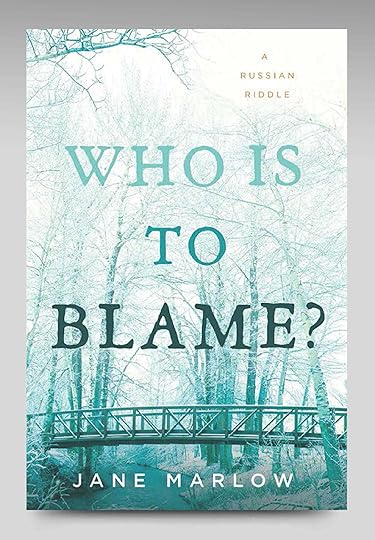
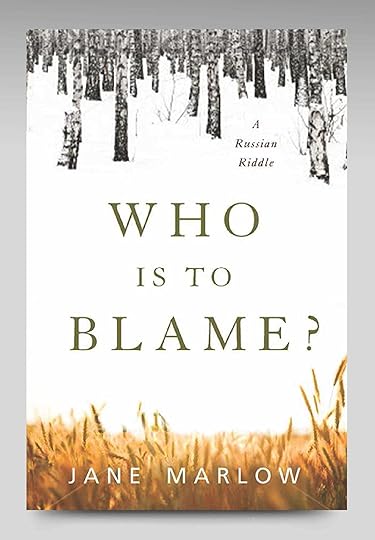
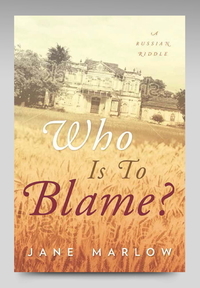

First and foremost, the cover is a sales tool. In a flash, it must convey enough information to grab potential readers. An appealing cover communicates the book’s genre as well as the age and gender of its readership. Is it a laugh-out-loud coming-of-age story? Or a dark cyberpunk fantasy?
The artwork must be harmonious with the type's font and size, and needs to be unique but not out in left field. A well-designed cover conveys a broad concept rather than fine details. It must be legible even when viewed as an Amazon thumbnail.
My publisher supplied me with four cover options. Ultimately, the three below didn't make the cut.



Published on February 10, 2018 15:38
SLAVIC SLAPSTICK
For more grins as well as insights into Russian history, visit my e-newsletter
newsletter
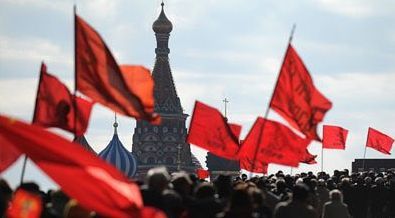
Joseph Stalin should have known communism wouldn’t work…
I mean seriously, there were red flags everywhere.
.
newsletter

Joseph Stalin should have known communism wouldn’t work…
I mean seriously, there were red flags everywhere.
.
Published on February 10, 2018 14:23
January 30, 2018
HUH? GODCHILDREN CAN'T MARRY?
As a reader of fiction, I often find myself wondering, “How did the author come up with THAT story line?”
During my initial research on Russia's serfs, I stumbled upon the Russian Orthodox prohibition of a person marrying the child of his or her godparents.
“Hummm….interesting," I thought. "That fly-in-the-ointment might expand into an engaging story line. It provides conflict as well as a moral choice. Plus it’s a little known fact.”
The complication ended up being the thread that held fast from the page 1 to page 301 of Who Is to Blame?.
______
Reapers
oil on canvas painted by Alexei Venetsianov in the late 1820s
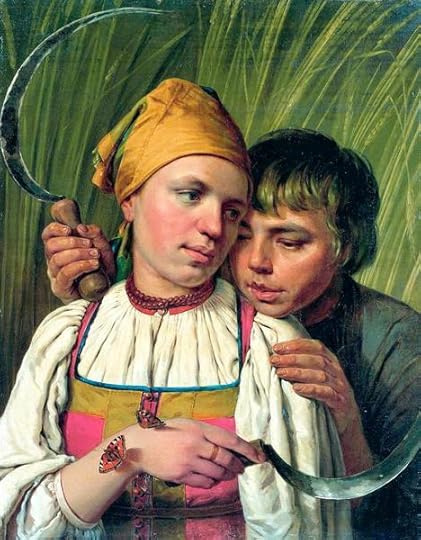
During my initial research on Russia's serfs, I stumbled upon the Russian Orthodox prohibition of a person marrying the child of his or her godparents.
“Hummm….interesting," I thought. "That fly-in-the-ointment might expand into an engaging story line. It provides conflict as well as a moral choice. Plus it’s a little known fact.”
The complication ended up being the thread that held fast from the page 1 to page 301 of Who Is to Blame?.
______
Reapers
oil on canvas painted by Alexei Venetsianov in the late 1820s

Published on January 30, 2018 16:35
THE OTHER EMANCIPATION PROCLAMATION
Four thousand miles from where President-elect Abraham Lincoln was counting down the final hours before his inauguration, Czar Alexander II rose before dawn and stood contemplatively by a window in the Winter Palace. This morning he would grant freedom to Russia’s serfs, one-third of the Empire’s population.
Abraham Lincoln is regarded as the Great Emancipator. However, Tsar Alexander beat him to the punch by liberating the serfs in 1861, two years prior to Lincoln’s Emancipation Proclamation. Russia’s emancipation freed 23 million serfs, whereas Lincoln’s actions liberated approximately one-sixth that number - 4 million slaves.
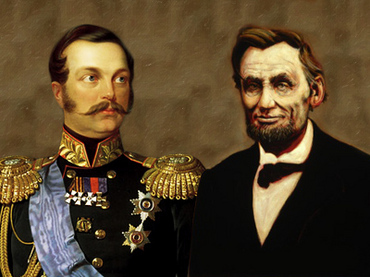
Due to the sheer power of the Autocracy, Russia’s milestone incited few and relatively minor cases of civil agitation. Compare this to the situation in the United States where a great civil war claimed the lives of an estimated 620,000 men (2% of the US population).
Both the President and the Tsar were killed at the hands of assassins. On March 1, 1881 – nearly 20 years to the day after freeing the serfs, Alexander was riding through St. Petersburg in a closed carriage when two young radicals hurled bombs. The Emperor died just a few feet from the spot where he had signed his decree of liberation.
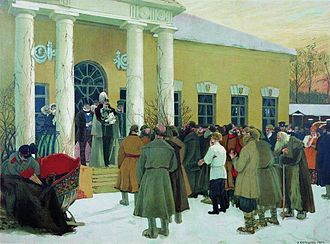
This 1907 painting by Boris Kustodiev depicts one of the countless announcements of the serfs' liberation that were made throughout Russia
Abraham Lincoln is regarded as the Great Emancipator. However, Tsar Alexander beat him to the punch by liberating the serfs in 1861, two years prior to Lincoln’s Emancipation Proclamation. Russia’s emancipation freed 23 million serfs, whereas Lincoln’s actions liberated approximately one-sixth that number - 4 million slaves.

Due to the sheer power of the Autocracy, Russia’s milestone incited few and relatively minor cases of civil agitation. Compare this to the situation in the United States where a great civil war claimed the lives of an estimated 620,000 men (2% of the US population).
Both the President and the Tsar were killed at the hands of assassins. On March 1, 1881 – nearly 20 years to the day after freeing the serfs, Alexander was riding through St. Petersburg in a closed carriage when two young radicals hurled bombs. The Emperor died just a few feet from the spot where he had signed his decree of liberation.

This 1907 painting by Boris Kustodiev depicts one of the countless announcements of the serfs' liberation that were made throughout Russia
Published on January 30, 2018 12:56
SLAVIC SLAPSTICK
Published on January 30, 2018 12:45
January 20, 2018
RUSSIAN WISDOM & WISECRACKS
"There is hardly a greater pleasure than to create."
Nikolai Gogol
1809-1852
Nikolai Vasilievich Gogol (1809-1853) is best known for his short story “The Overcoat” & political satire "Dead Souls." Like many creative geniuses, Gogol had a reputation for eccentricity.
In 1836 Gogol published "The Nose," a short story about a nose that detaches itself from the face of a St. Petersburg official & wanders around town, leading its own independent existence. Gogol was so ashamed of his own nose, he often covered his face with a purple cloth.
Gogol was haunted by taphophobia - fear of being buried alive. As prevention, he would sleep sitting upright & his will requested that he be buried only when his body was clearly decomposing.
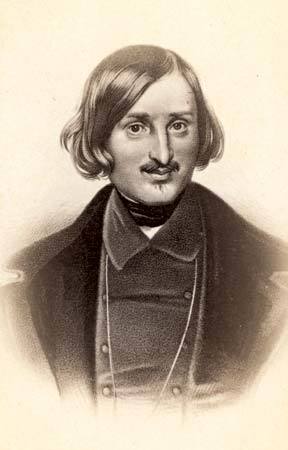
Nikolai Gogol
1809-1852
Nikolai Vasilievich Gogol (1809-1853) is best known for his short story “The Overcoat” & political satire "Dead Souls." Like many creative geniuses, Gogol had a reputation for eccentricity.
In 1836 Gogol published "The Nose," a short story about a nose that detaches itself from the face of a St. Petersburg official & wanders around town, leading its own independent existence. Gogol was so ashamed of his own nose, he often covered his face with a purple cloth.
Gogol was haunted by taphophobia - fear of being buried alive. As prevention, he would sleep sitting upright & his will requested that he be buried only when his body was clearly decomposing.

Published on January 20, 2018 07:33
DUE OUT MAY 2018
My next novel in the Petrovo series contains the story of the little-known Crimean war seen though the eyes of a cynical, funny, very horny medical student.
Even though it’s a war story, it's written in intimate human terms that appeal to both women and men.
Plus you'll be able to catch up on some of your favorite characters from Who Is to Blame.
The book will be available in paper, Kindle, and Audible.
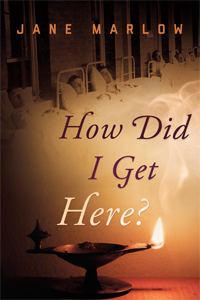
Even though it’s a war story, it's written in intimate human terms that appeal to both women and men.
Plus you'll be able to catch up on some of your favorite characters from Who Is to Blame.
The book will be available in paper, Kindle, and Audible.

Published on January 20, 2018 05:53
Jane Marlow's Blog
My sincere hope is that you find my historical Russian novels to be both entertaining and informative.
- Jane Marlow's profile
- 41 followers




